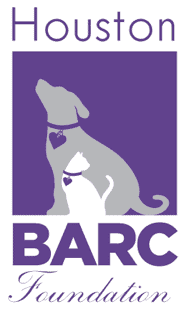Where We’ll Be Next!
April 2024
Shine Bright, Do Good!
Shine Bright, Do Good!
JOIN US FOR A KENDRA GIVES BACK EVENT Enjoy sips, sweets, and jewels as you shop for good! 20% of the proceeds made during these hours will benefit the Houston BARC Foundation.
As the municipal animal shelter in the 4th largest city in the United States, BARC has numerous initiatives occurring simultaneously: animal control, pet licensing, outreach, education, spay/neuter, and many, many more.
For ways you can help, please check the links above or visit http://www.houstontx.gov/barc/!

BARC Needs Fosters
BARC can never turn away an animal. Whether the animal is a goat, a goose or an alligator; a thirteen-year-old schnauzer or a one-day-old kitten; an emaciated dog or an obese cat; a kitten with chemical burns, or a cat shot with an arrow; BARC takes them all. And, because of Houston’s climate and size, they never get a break. The animals are constantly coming in. BARC needs your help with the animals that need special care. They might be too young, too sick, or too shy. They may have ringworm, mange, or heartworms. They may be mothers nursing kittens or orphaned kittens in need of bottle-feeding. All of them need help. They need you.
What You Can Do
Fosters change lives. Fosters put in the time and effort the shelter sometimes just isn’t able to due to the numbers of animals they have. Sometimes all a foster needs to do is provide some love and patience and a second chance to a shy dog; other times it’s waking up at three a.m. to bottle-feed some hungry kittens. There are many options within fostering and many levels of time and emotional commitment. With every kind of fostering, though, the goal is the same: to help every foster animal become adoptable and to find every foster animal a forever home. We can’t control the number of animals coming into BARC, but you can help control the number that make it into loving homes. You can help us give these animals a chance.
→ NEW HW+ Initiative
The Houston BARC Foundation is taking on a new initiative to support adopters who select a heartworm positive dog. We will now fund the full heartworm treatment for HW+ dogs adopted from BARC.
Did you know?
- 32% of all dogs turned into BARC are heartworm positive.
- The average cost of heartworm treatment for a dog in Houston ranges from $800 to $1,000.
You can help increase their chance of adoption by covering their adopter’s cost of heartworm treatment!
→ Become A Foster
The primary foster caretaker must be 18 years or older. The foster family must live within 45 minutes of BARC in pet-friendly housing. You must have reliable transportation to get to BARC for foster medical appointments and meet-and-greets with potential adopters. You must be able to safely house the foster pet completely separate from other pets in the house (e.g. an extra room, a crate) for the first 72 hours & when unsupervised. Cats/kittens are indoor-only fosters; sick foster pets must be quarantined from owned pets for the duration of the foster; all foster pets must be kept completely separate from owned pets for at least 72 hours. You must care for the foster pet as if it’s your own, keeping it in a climate-controlled area, providing fresh food and water daily. You must be willing to courteously address emails from adopters within 48 hours and set up meet-and-greets.

BARC Stats
As you will see below, there are many initiatives that contribute to BARC’s live release results, including adoptions, foster/rescue, return-to-owner, trap-neuter-return and more. When BARC first began its transformation, most of the live release focus was placed on adoptions. Since then, they have discovered that saving lives is far broader than just adoptions. Their foster, rescue, trap-neuter-return and return-to-owner programs are extremely effective and give animals numerous avenues for which to find safe, forever homes. When viewing their live release numbers, be sure to look carefully at all live initiatives as a whole!



